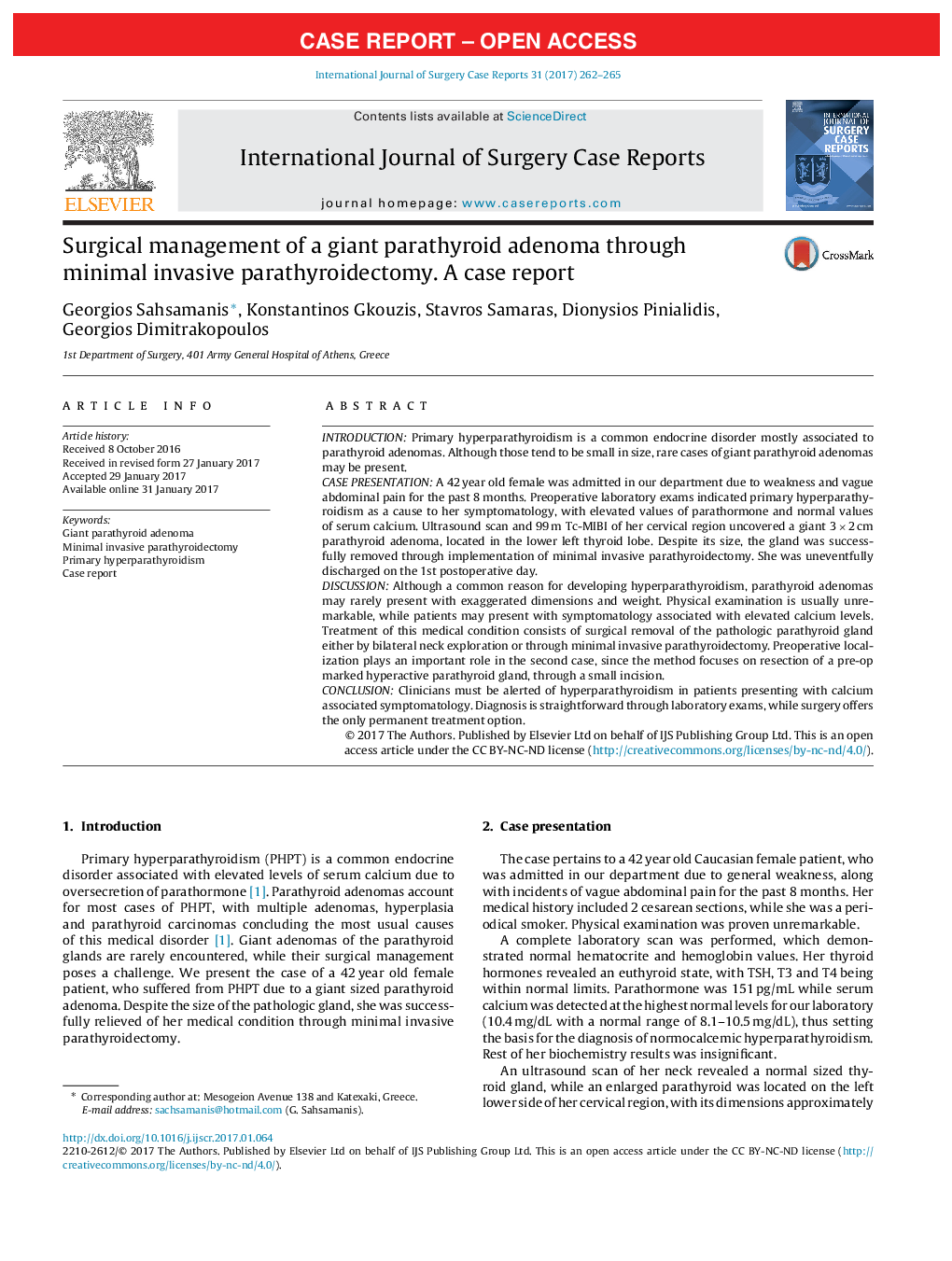| Article ID | Journal | Published Year | Pages | File Type |
|---|---|---|---|---|
| 5732961 | International Journal of Surgery Case Reports | 2017 | 4 Pages |
â¢While parathyroid adenomas account for approximately 80% of PHPT cases, they rarely present as giant parathyroid adenomas.â¢Preoperative workup diagnosed the patient with PHPT and helped in accurate localization of the hyperactive parathyroid gland.â¢Despite the size of the adenoma, it was successfully removed through minimal invasive parathyroidectomy, through a 2 cm incision.â¢Post-surgical recovery was uneventful with normalization of parathormone levels and the patient relieved of her symptoms.
IntroductionPrimary hyperparathyroidism is a common endocrine disorder mostly associated to parathyroid adenomas. Although those tend to be small in size, rare cases of giant parathyroid adenomas may be present.Case presentationA 42Â year old female was admitted in our department due to weakness and vague abdominal pain for the past 8 months. Preoperative laboratory exams indicated primary hyperparathyroidism as a cause to her symptomatology, with elevated values of parathormone and normal values of serum calcium. Ultrasound scan and 99Â m Tc-MIBI of her cervical region uncovered a giant 3Â ÃÂ 2Â cm parathyroid adenoma, located in the lower left thyroid lobe. Despite its size, the gland was successfully removed through implementation of minimal invasive parathyroidectomy. She was uneventfully discharged on the 1st postoperative day.DiscussionAlthough a common reason for developing hyperparathyroidism, parathyroid adenomas may rarely present with exaggerated dimensions and weight. Physical examination is usually unremarkable, while patients may present with symptomatology associated with elevated calcium levels. Treatment of this medical condition consists of surgical removal of the pathologic parathyroid gland either by bilateral neck exploration or through minimal invasive parathyroidectomy. Preoperative localization plays an important role in the second case, since the method focuses on resection of a pre-op marked hyperactive parathyroid gland, through a small incision.ConclusionClinicians must be alerted of hyperparathyroidism in patients presenting with calcium associated symptomatology. Diagnosis is straightforward through laboratory exams, while surgery offers the only permanent treatment option.
